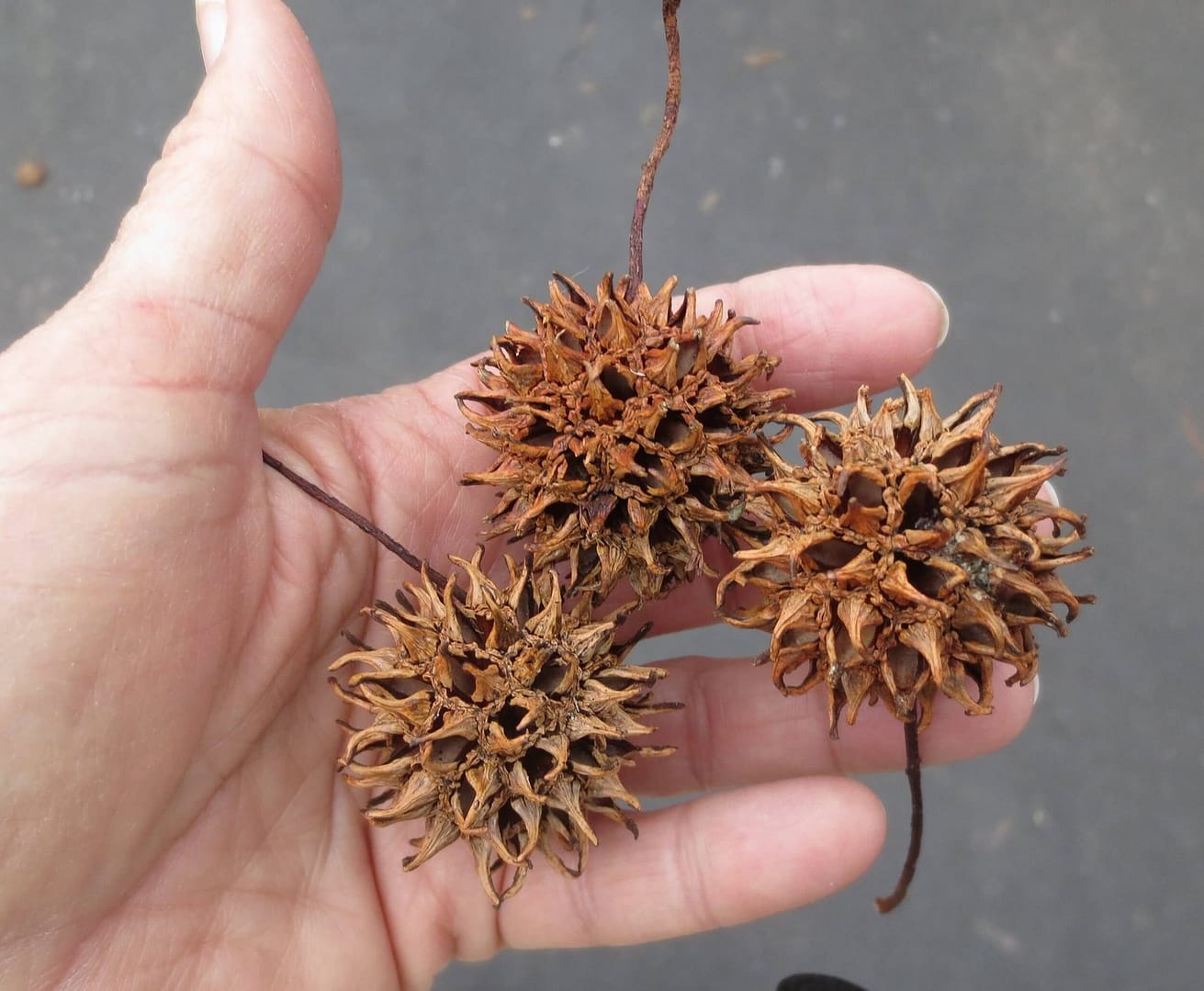Save Your Customers and Yourself From A High Maintenance Tree Mess
When it comes to transforming a landscape, trees often serve as crown jewels, adding shade, beauty, and a sense of grandeur to any outdoor space. But not all trees are created equal in terms of the care they require. Some species can become more of a burden than a blessing, leading to higher maintenance costs, potential property damage, and a variety of other challenges. These are the trees to avoid recommending or planting. One group would be trees that are invasive species and will take over, like Chinaberry. Another group would be highly messy trees. Another group of trees to avoid recommending are high maintenance trees. This group may include trees from other groups. There are several high-maintenance trees to avoid, this article will address 15 of the most important.
For landscapers or people doing ornamental maintenance, choosing the right trees is crucial to avoid future headaches for both you and your clients. In this guide, we’ll take a closer look at 15 tree species that, while beautiful, can be incredibly high-maintenance. By being aware of the issues associated with these trees, you can make more informed recommendations and help your clients enjoy a lush, manageable yard.
1. Willows (Salix spp.)
Willows, especially the weeping willow, are often admired for their elegant, drooping branches and their serene presence near water. However, these trees come with a host of challenges that make them less than ideal for most residential landscapes.
Why Willows Can Be a Hassle:
Aggressive Roots: Willow trees have shallow, widespread roots that are notorious for invading sewer lines, water pipes, and septic systems, often leading to costly repairs. They can also cause damage to sidewalks and driveways if planted too close.
Messy Yard: The extensive root system can create bumps in the lawn, making mowing difficult. Additionally, willows shed a large number of leaves, twigs, and branches, requiring constant cleanup.
High Water Demand: Willows need a lot of water, which isn’t ideal in drought-prone areas or where water conservation is a priority.
Given these issues, willows are best suited to large, open spaces far from any structures or utility lines.
2. Fruit Trees - Trees to Avoid
Fruit-bearing trees, like apple, pear, and cherry trees, can be a delightful addition to any garden, offering both beauty and the promise of fresh produce. However, they come with a significant maintenance burden that many homeowners may not be prepared for.
Challenges with Fruit Trees:
Attracting Pests: Fruit trees are magnets for insects and wildlife. Pests like aphids, caterpillars, and fruit flies can infest the trees, while animals such as squirrels and birds may feast on the fruit, leading to an ongoing battle to protect your crops.
Fallen Fruit: Unharvested fruit can fall to the ground, creating a mess and attracting more pests, including ants and wasps. Rotting fruit can also produce unpleasant odors.
Pruning and Care: Regular pruning is essential to maintain the tree’s shape and encourage healthy fruit production. Additionally, fruit trees need to be monitored for diseases like blight and rust, which can spread quickly and devastate the tree.
While fruit trees can be rewarding, they are best suited for homeowners who are willing to invest the time and effort required to care for them properly.
3. Strangler Fig (Ficus aurea)
The strangler fig is a fascinating tree native to tropical regions, including parts of the Southeastern United States. It starts its life as an epiphyte (a plant that grows on another plant) and eventually encases its host tree with its roots.
Why Strangler Figs Are Problematic:
Invasive Growth: Strangler figs grow aggressively, and their roots can quickly overtake the host tree, eventually killing it. In a landscaped environment, these roots can also invade and damage nearby structures, including foundations and plumbing.
Messy Fruit: The fruit of the strangler fig attracts wildlife, which can spread the seeds far and wide, leading to new fig trees sprouting up in unwanted places.
Maintenance Needs: While strangler figs can tolerate pruning, they require regular trimming to keep their growth in check and prevent them from becoming too dominant in a landscape.
These trees are more suited to wild, natural areas where their growth can be allowed to progress without endangering nearby structures or other plants.
4. Silver Maple (Acer saccharinum)
Silver maples are fast-growing trees native to the central and eastern United States. While they’re loved for their rapid growth and beautiful foliage, they can be a nightmare to manage in residential areas.
Downsides of Silver Maples:
Invasive Roots: Silver maples have invasive root systems that can break through sidewalks, driveways, and even foundations. They also seek out water sources, making them a frequent cause of sewer line and septic system damage.
Weak Wood: The wood of the silver maple is relatively weak, making it prone to breaking during storms, which can lead to hazardous situations.
High Maintenance: Due to their rapid growth, silver maples often require regular pruning to prevent them from becoming too large and unwieldy.
Given these issues, silver maples are not recommended for areas where their roots or falling branches could cause significant damage.
5. Eucalyptus (Eucalyptus spp.)
Eucalyptus trees, native to Australia, are known for their rapid growth and aromatic leaves. However, they are also known for their high maintenance requirements and potential hazards.
Why Eucalyptus Trees Can Be Troublesome:
Fire Hazard: Eucalyptus trees produce large amounts of oil, which makes them highly flammable, posing a significant risk in wildfire-prone areas.
Prone to Limb Drop: Eucalyptus trees are notorious for “sudden limb drop,” where large branches fall without warning, posing a danger to people, vehicles, and structures beneath the tree.
Messy Yard: These trees shed their bark, leaves, and branches regularly, requiring constant cleanup. They also need frequent pruning to manage their height and prevent limb drop.
Due to these risks, eucalyptus trees are better suited to large, open spaces rather than residential neighborhoods.
6. Bradford Pear (Pyrus calleryana ‘Bradford’)
The Bradford pear, once a popular ornamental tree for its beautiful white blossoms, has fallen out of favor due to its many downsides.
Issues with Bradford Pears:
Weak Branch Structure: Bradford pears often develop weak branch unions, making them prone to splitting and breaking during storms, which can lead to significant property damage.
Invasive Species: Bradford pears spread rapidly through seeds dispersed by birds, often outcompeting native species and reducing biodiversity.
Unpleasant Odor: While the blossoms are visually appealing, they emit a foul odor that many people compare to rotting fish.
Because of their weak structure and invasive nature, Bradford pears are not recommended for residential landscapes.
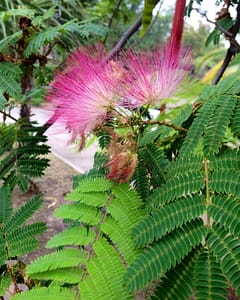
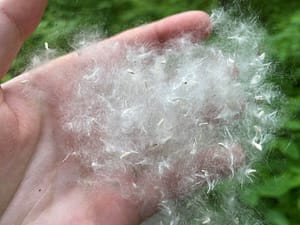
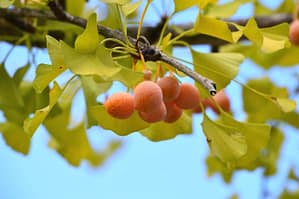
7. Sweet Gum (Liquidambar styraciflua)
Sweet gum trees are known for their star-shaped leaves and vibrant fall colors, but they also come with several challenges that make them less than ideal for residential planting.
Why Sweet Gum Trees Are a Nuisance:
Spiked Seed Pods: Sweet gum trees produce seed pods known as “gumballs,” which are covered in sharp spikes. These pods can be a major nuisance when they fall, creating a hazard for walking barefoot and making lawn maintenance difficult.
Invasive Roots: The roots of sweet gum trees are aggressive and can damage sidewalks, driveways, and foundations. They also tend to surface, creating bumps in the lawn.
High Maintenance: In addition to dealing with the seed pods, sweet gum trees require regular pruning to maintain their shape and prevent branches from becoming too heavy.
While sweet gum trees can be beautiful, their maintenance demands make them a poor choice for many homeowners.
8. Sycamore (Platanus occidentalis)
Sycamore trees are massive, deciduous trees known for their distinctive mottled bark and broad leaves. However, they come with several drawbacks that make them challenging to manage in a residential setting.
Problems with Sycamore Trees:
Aggressive Roots: Sycamores have extensive root systems that can damage nearby structures, including foundations, sidewalks, and sewer lines.
Heavy Leaf Drop: Sycamores shed a large number of leaves, creating a significant cleanup burden in the fall. They also drop large amounts of bark, which can make the yard messy.
Susceptible to Disease: Sycamore trees are prone to several diseases, including anthracnose, which can cause significant defoliation and weaken the tree.
Given their size and maintenance needs, sycamores are best suited for large properties with plenty of space for them to grow without causing damage.
9. Mimosa Tree (Albizia julibrissin)
Mimosa trees, also known as silk trees, are admired for their delicate, fern-like leaves and pink, powder-puff flowers. However, they are not without their problems.
Why Mimosa Trees Are Not Ideal:
Messy Yard: Mimosa trees produce an abundance of flowers that, while beautiful, can create a mess when they fall. They also drop seed pods that can litter the ground and sprout unwanted seedlings.
Invasive Species: Mimosas spread rapidly through seed dispersal and can quickly overtake an area, crowding out native species and disrupting local ecosystems.
Short Lifespan and Disease: Mimosa trees have a relatively short lifespan and are susceptible to diseases like mimosa wilt, which can kill the tree.
Due to their invasiveness and maintenance needs, mimosa trees are not recommended for residential landscapes.
10. Lombardy Poplar (Populus nigra ‘Italica’)
Lombardy poplars are fast-growing trees with a narrow, columnar shape, making them a popular choice for windbreaks and privacy screens. However, they are highly susceptible to pests and diseases, particularly cankers, which can cause significant dieback and eventually kill the tree. Additionally, their weak wood and shallow roots make them prone to toppling in high winds.
11. Leyland Cypress (Cupressus × leylandii)
Leyland cypress is another fast-growing tree often used for privacy screens. However, it is prone to a variety of diseases, including canker and root rot, which can cause sections of the tree to die off. Leyland cypress also requires frequent pruning to maintain its shape, and its shallow roots can make it unstable in strong winds.
12. Eastern Cottonwood (Populus deltoides)
Eastern cottonwood trees are massive, fast-growing trees that produce large amounts of cottony seeds, which can create a mess in the yard. Their aggressive roots can invade septic systems and water lines, causing damage. Cottonwoods are also prone to disease and have weak wood that can break easily, making them a poor choice for residential areas.
13. Black Walnut (Juglans nigra)
Black walnut trees are known for producing a substance called juglone, which is toxic to many other plants. This can make it difficult to grow anything near a black walnut tree. Additionally, these trees produce large, hard fruits that can be messy and difficult to clean up. Their roots are also aggressive and can cause damage to nearby structures.
14. Female Ginkgo (Ginkgo biloba)
While the male ginkgo tree is relatively low-maintenance, the female ginkgo produces foul-smelling fruits that can make a mess in the yard. The odor is often compared to rotten eggs or vomit, making it unpleasant to be around. If planting a ginkgo, it’s best to opt for a male tree to avoid this issue.
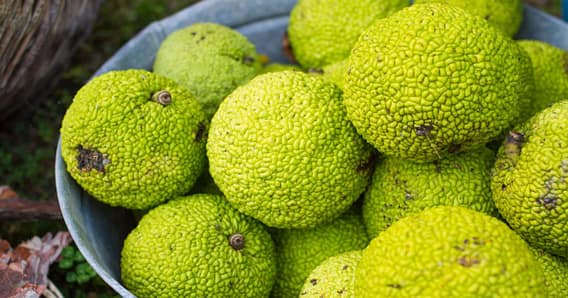
Osage Orange
15. Osage Orange (Maclura pomifera)
Osage orange trees produce large, bumpy fruits that can be a nuisance when they fall to the ground. These fruits are not only messy but can also be hazardous if stepped on. The tree’s wood is also extremely hard, making it difficult to prune or remove. Additionally, the branches have sharp thorns, which can pose a danger to anyone working near the tree.
Conclusion
While trees can be a beautiful and valuable addition to any landscape, it’s important to choose species that won’t create more problems than they solve. The trees listed in this guide are known for their high maintenance needs, aggressive growth patterns, and potential to cause damage to property. By avoiding these species and recommending more manageable alternatives, landscapers can help ensure that their clients enjoy a beautiful, low-maintenance yard for years to come.
When planning a landscape, always consider the long-term implications of the trees you choose. Opt for species with non-invasive roots, strong wood, and lower maintenance requirements to create a landscape that is both beautiful and sustainable.

